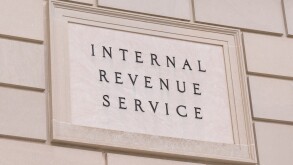China’s 13th National People’s Congress (NPC) and the Chinese People’s Political Consultative Conference (CPPCC) held meetings (the so-called ‘Two Sessions’) in the period of March 4-11 2021.
A number of regulatory and tax reforms have been announced in the course of the week, in particular in Premier Li Keqiang’s government work report addressed to the NPC. In parallel, China’s draft 14th Five Year Plan (FYP) was also approved by the NPC during the Two Sessions. The 14th FYP provides a comprehensive framework of development for China’s society and economy over the next five years (i.e. 2021 to 2025).
As per the government work report and the 14th FYP, the notable tax measures include the matters outlined below.
Support for manufacturing
Extension ofthe existing 75% research and development (R&D) expense super deduction rules - these had been due to expire by the end of 2020. Under the super deduction, a 175% deduction (i.e. a 75% bonus deduction) is available for eligible R&D expenses for corporate income tax (CIT) purposes.
In the VAT space, enterprises engaged in advanced manufacturing can get a full refund of their incremental excess input VAT and the refund can be filed for on a monthly basis. Up until recently Chinese VAT rules provided that excess input VAT could only be carried forward for set off against the output VAT of future periods.
Enterprises in a small number of sectors were allowed VAT refunds on a pilot basis, including advanced manufacturing enterprises, but only a proportion of the excess input VAT. Going forward such enterprises can now get a full refund of the excess.
Reduction in tax burden for small taxpayers
The existing low rate of CIT for small and low profit enterprises is being further enhanced.
At present, eligible enterprises can use: (i) reduced rates of CIT in combination with (ii) a reduction of their tax base to 50% of profits. The net effect is that for profits up to RMB1 million (US$160,000) an effective 5% CIT rate applies and then a 10% rate for profits between RMB1 million and RMB3 million.
So, for example, a small company earning RMB3 million profits would enjoy an 8.25% blended tax rate. The 5% effective rate above is now being reduced to 2.5%. This consequently would also bring the blended rate for the company with RMB3 million profits down to 7.425%.
It should be noted that the small and low profit enterprise evaluation is carried out at entity level, not at group level, so small subsidiaries of foreign multinational enterprises (MNEs) in China can also benefit from this rate.
In the VAT space, policies include: (i) continuance of the VAT incentives introduced for small-scale VAT taxpayers in response to COVID-19 disruption; these had been due to expire by December 31 2020; (ii) lift the VAT obligation threshold for small-scale VAT taxpayer to RMB150,000 from RMB0.1 million, i.e. if their monthly sales are under RMB150,000, then they will not be subject to VAT.
CIT incentives to cover more green projects
In China, environmental protection and energy/water conservation projects may benefit from more generous CIT treatment. For example, taxable income derived from qualified projects may be exempt from CIT for the first three years, and subject to tax on 50% of income earned for the fourth to sixth years. This is referred to as ‘exemption for three years and 50% reduction for another three years’.
There is also a tax credit equal to 10% of the purchase cost of equipment for environmental protection and energy/water conservation purposes. The government has now decided to expand the range of green projects that can benefit from the incentives.
Improving tax framework
Alongside these, China will also improve its import taxation framework and simplify the system for claiming tax incentives. In parallel, China will continue to facilitate foreign investment into China, as follows:
Further shorten the ‘negative list’ for foreign investment into the Chinese market;
Push forward with the opening up of service sector;
Develop a ‘negative list’ for the cross-border service trade;
Advance the construction of Hainan Free Trade Port; and
Innovative opening up measures for free trade zones.
In prior years, following the Premier’s government work report address to the NPC, various ministries issued details of the policies he had outlined. As such, greater detail on these initiatives should be forthcoming in the next weeks.
Lewis Lu
Partner, KPMG China












